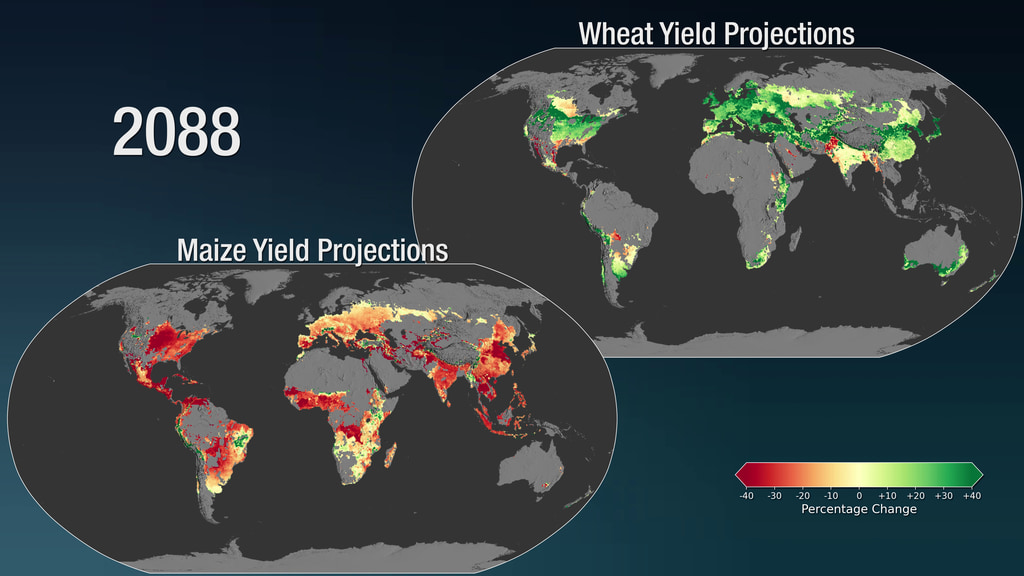Increasingly Dangerous Climate for Agricultural Workers
A warming climate will create challenges for agricultural workers. This visualization shows the increased number of days per year that are expected to have a NOAA Heat Index greater than 103 degrees Fahrenheit based on two different climate scenarios (SSP2-4.5 and SSP5-8.5). The visualization also plots the number of days exceeding this threshold for five select locations in the United States. The map projection in Robinson and the color map is cividis.
A warming climate will create challenges for agricultural workers as well as the crops which they grow. This visualization shows the increased number of days per year that are expected to have a NOAA Heat Index greater than 103 degrees Fahrenheit, a threshold that NOAA labels ‘dangerous’ given that people struggle to regulate their body temperatures at this level of heat and humidity. These results are from an ensemble of 22 global climate models from the Sixth Coupled Model Intercomparison Project (CMIP6) bias-adjusted by the NASA Earth Exchange (NEX GDDP). Two projections are visualized, one for a moderate emissions climate scenerio (SSP2-4.5) and one for a high emmissions climate scenerio (SSP5-8.5).
A warming climate will create challenges for agricultural workers. This visualization shows the increased number of days per year that are expected to have a NOAA Heat Index greater than 103 degrees Fahrenheit based on two different climate scenarios (SSP2-4.5 and SSP5-8.5). The map projection in Robinson and the color map is cividis.

This baseline visualization shows the average number of days per year that have had to have a NOAA Heat Index greater than 103 degrees Fahrenheit over the period 2010-2014. The map projection is Robinson and the color map is viridis.
Credits
Please give credit for this item to:
NASA's Scientific Visualization Studio
-
Visualizer
- Mark SubbaRao (NASA/GSFC)
-
Scientists
- Alex C. Ruane (NASA/GISS)
- Meridel M. Phillips (NASA GISS)
-
Technical support
- Laurence Schuler (ADNET Systems, Inc.)
- Ian Jones (ADNET Systems, Inc.)
Release date
This page was originally published on Wednesday, March 9, 2022.
This page was last updated on Monday, January 6, 2025 at 12:19 AM EST.
